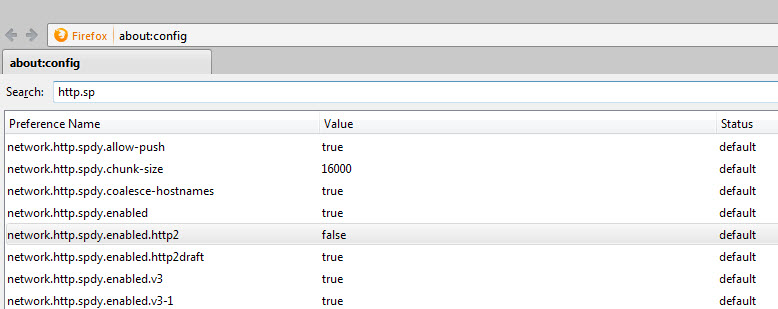The state of HTTP/2 in Firefox, Chrome and Internet Explorer
HTTP/2, an update of the original Hypertext Transfer Protocol last updated in 1999, is finally approved. The update introduces several improvements such as faster user experience when browsing the Web, bandwidth reductions or easier use of secure connections.
Work began back in 2012 when Google's SPDY protocol was selected as the starting point. You can check out the official Github page of HTTP/2 to access drafts and specifications.
Now that HTTP/2 has been approved, it is likely that most browser developers add support for its final form soon.
Most companies and organizations have already integrated previous drafts of the protocol but since it was not finalized until recently, not all features have been implemented yet in their final form.
You find information about implementations on this page. It lists a company or product and its supported negotiations and draft.
As far as the Firefox browser is concerned, here is what you need to know:
- The current stable release supports HTTP/2 draft 14 and it is used when you connect to google.com.
- Firefox 36, to be released next week, supports drafts 14 and 15. Firefox will negotiate with Twitter and Google using draft 15.
- Firefox 37 and 38 add draft 16 on top of this.
Mozilla plans to remove previous draft levels of HTTP/2 from the browser "sometime in the near future" at which point in time Firefox will support the proposed standard "h2".
Mozilla engineer Patric McManus notes that 9% of all Firefox release channel HTTP transactions are already happening over HTTP/2 and that the number will rise significantly in the near future.
Firefox users find various HTTP/2 related preferences on the about:config page including network.http.spdy.enabled.http2draft (defaults to True) and network.http.spdy.enabled.http2 (defaults to False).

Tip: Firefox users can install the SPDY Indicator add-on in the browser which indicates if websites support HTTP/2 or SPDY.
Google announced a week ago that it will "roll out support for HTTP/2 in Chrome 40" in the coming weeks. Chrome Stable is already at that version which makes it likely that Google plans to release the update before the stable channel of the browser hits version 41.
Microsoft's Internet Explorer supports HTTP/2 in Internet Explorer 11 running on Windows 10 Technical Preview systems. It is unclear if previous versions of the browser or the same version on different systems it runs on will receive support for HTTP/2 as well.
In closing, it seems that Google will be the first to integrate HTTP/2 fully in its web browser. Firefox users will have to wait a couple of releases before full support is added to the browser, and Internet Explorer users may have to wait even longer, possibly until Windows 10 gets released in the last quarter of 2015 for that.
This article was first seen on ComTek's "TekBits" Technology News

- Log in to post comments